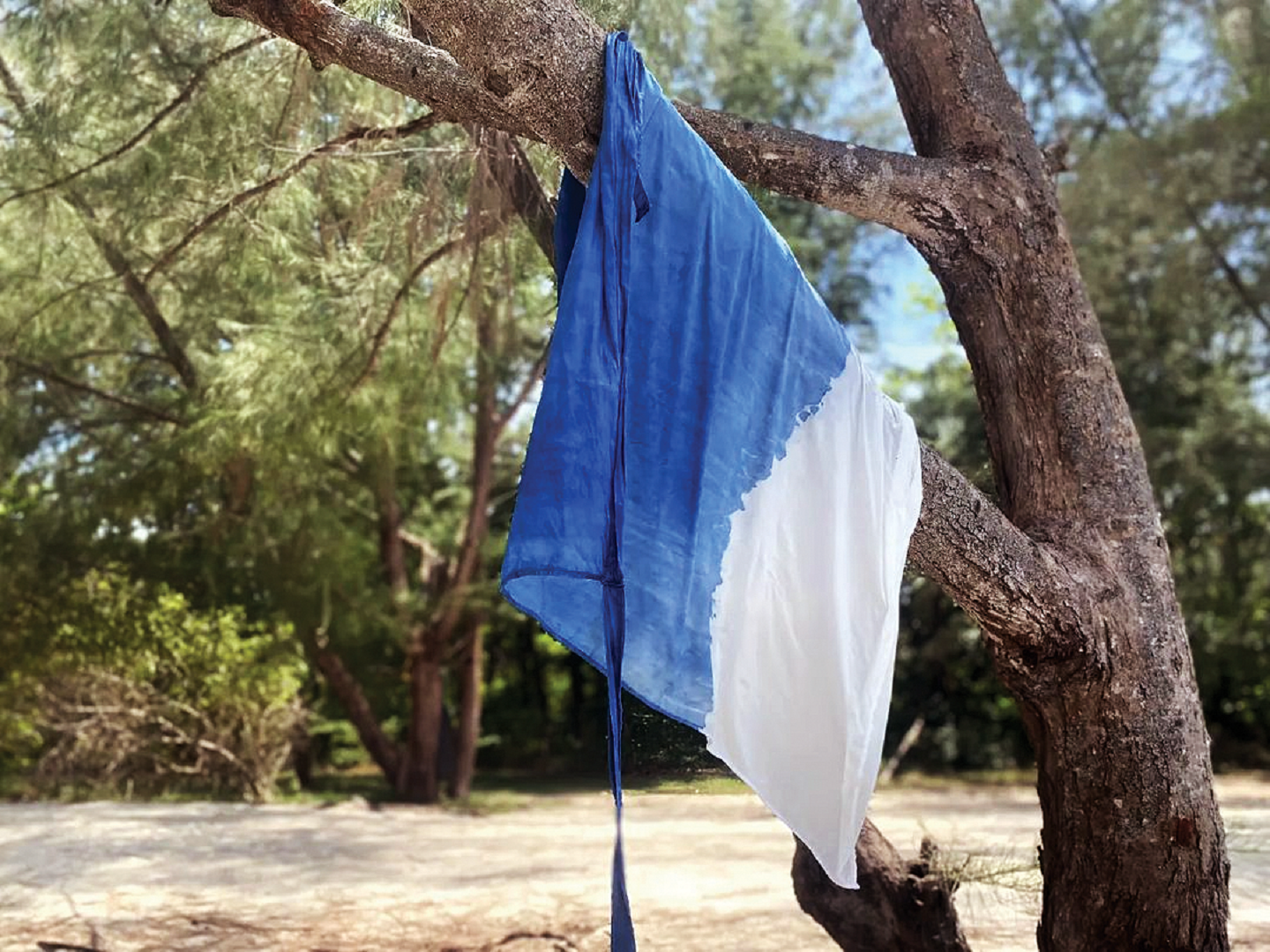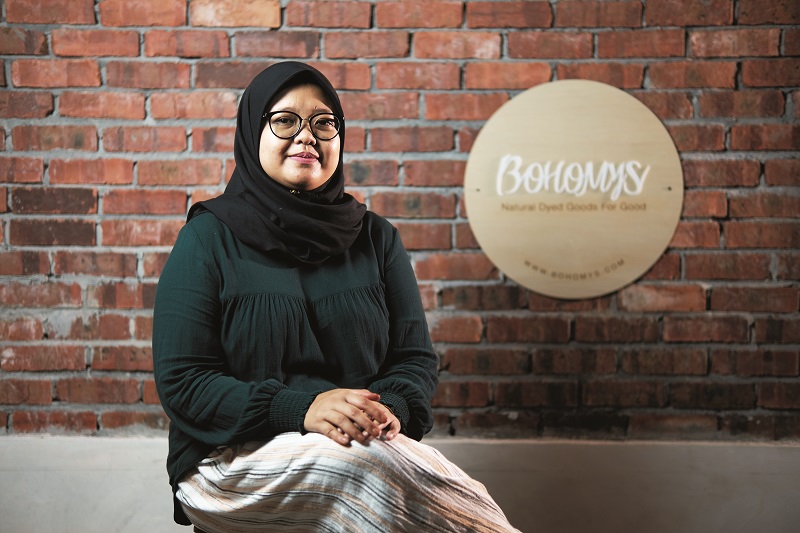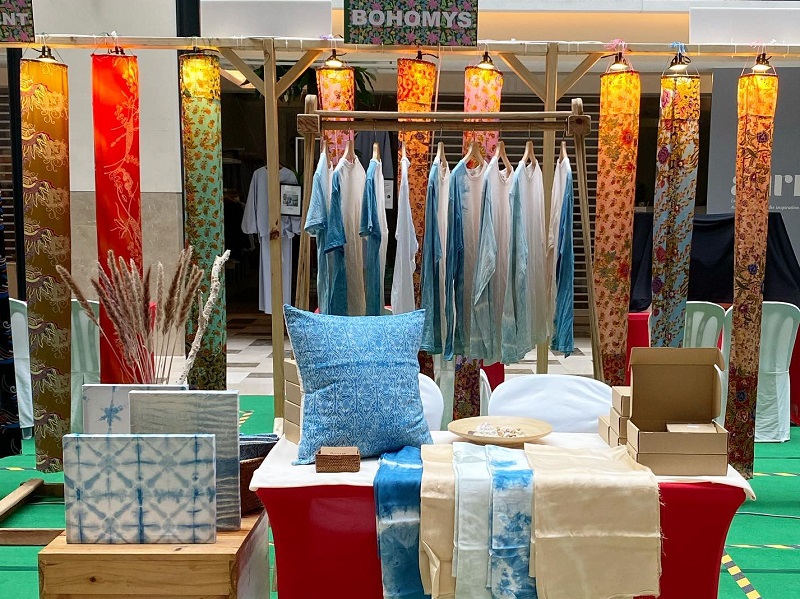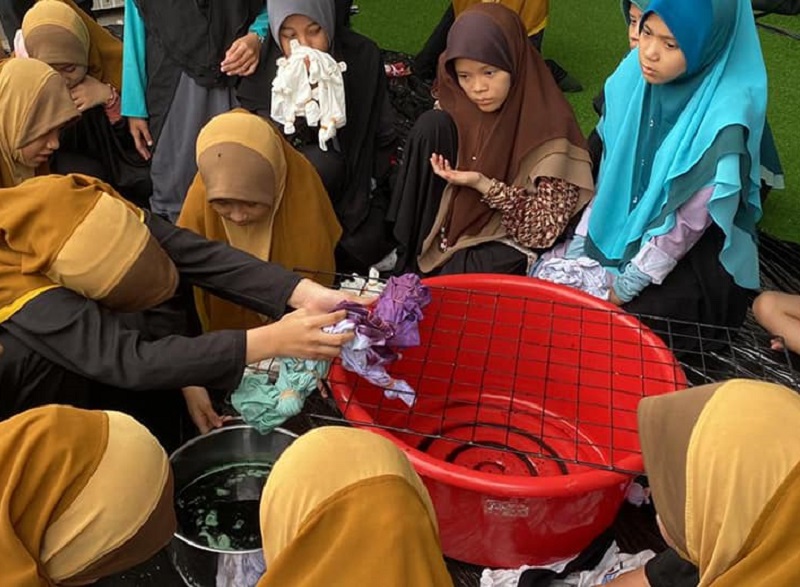
Bohomys produces 400 items per production run monthly at a small studio in Kampung Tengah, Puchong (All photos: Bohomys)
Shaqira Ramli was a fine arts student at The American University in Dubai, who went on quite a whirlwind journey before putting her passion and expertise to work. A trained graphic designer and event executive, she followed a well-trodden career path before quitting in 2016 to focus on motherhood.
“I was carrying my firstborn and had really bad morning sickness. So I had to stop working to concentrate on my pregnancy,” she says.
This quiet and restful period prompted her to rekindle her love of the arts, aside from looking for a way to generate some income.
“I always wanted to do something in the arts because I came from that background. I imported tapestries from India and started selling them at bazaars across Malaysia,” says Shaqira.
“We regularly attended an event organised by a friend in Penang. One day, he asked if I knew how to teach tie-dye. Essentially, all arts students should know how to do tie-dye. I had never taught anyone the technique but I needed to do something new, so I accepted the invitation. My first tie-dye workshop was at the George Town Festival 2017.”
dscf3311.jpg

The event may have led Shaqira to venture into natural dyes, but it was upon discovering the negative effects of synthetic dyes on the human body and the environment that made her determined to spread awareness of the benefits of the former.
“When I learnt about tie-dye, I went for a class where the instructor warned us, ‘Please be careful when handling the dye because when you inhale it, it can destroy your reproductive system’. Water creatures are also threatened by factories that flout the law by not disposing of synthetic dyes properly,” she says.
Learning about natural dyes was a matter of experimentation and trial and error for Shaqira. “I knew about natural dyes when I was in school, so I used the knowledge and improvised. I also follow natural dyers from overseas on social media to see how they worked. Essentially, you just experiment. We process certain plants to see what colours they produce.”
Malaysia is rich with natural resources and it has been a great advantage to Shaqira as she aims to explore colours beyond those available on the market.
“There are batik producers who already use natural dyes, but that is relatively new among local youth and the colours produced are limited. There are a lot of plants in the country and we want to get our hands on them,” she says.
In line with its vision to celebrate ethical and slow fashion, Bohomys produces 400 items per production run monthly at a small studio in Kampung Tengah, Puchong, Selangor. These handmade pieces are painstakingly crafted using natural fibres such as cotton and silk before they are dipped into dyes made from kayu sepang, daun ketapang, tarum, mangosteen skin, acacia bark, orange skin or mulberry leaves, sourced from a herbal distributor in Kedah.
tie-dye_booth.jpg

“We have to clean new fabric with soda ash and leave it overnight because it is usually covered with wax to make it look nice and stiff. After rinsing, we wash it again with alum, which helps the fabric absorb the dye better. Then, we simmer the product in a dye solution — boiling will ruin the properties of the dye. The last step is to rinse and dry it again.”
The process of making natural dyes is time-consuming because they need to be simmered for up to 24 hours, depending on the volume of dye, Shaqira explains. “Before this, we bought dye extracts from India. Now, half our dyes are imported and half are our own. We received a grant from Yayasan Inovasi to produce natural dyes in mass quantities, and they will be available to the public next year. This gives us the opportunity to let people know that art can be done by anyone.”
For the longest time, Bohomys was a brand known for running workshops before it pivoted to selling products. As a business that depended mostly on physical interaction, the natural-dye enterprise was hit hard by the raging coronavirus pandemic.
“We had workshops every week before the pandemic. We were really comfortable doing that as it gave us a stable income. But the pandemic made it impossible to continue the activity, so we began selling products instead,” she says.
Bohomys uses a specific kind of textile that suits natural dyes and Shaqira needed manpower to help her turn the fabrics into T-shirts, totes, baby rompers and lanyards, among others. She found a number of struggling youth who had lost their sources of income during that period, working as seamstresses in Kampung Tengah — where she resided during the lockdown.
tie-dye_class.jpg

Shaqira offered them the opportunity to help her with the production, but soon noticed that they were not highly skilled in what they did. “Most of them started sewing because that is what their parents had asked them to do; they did not have proper training or skills. I then asked someone to teach them the basics of sewing so the products could be commercialised,” she recalls.
Now, Bohomys is one of the participants of the Program Perolehan Impak Sosial Kerajaan (PPISK), where a portion of its profit is used to upskill youth for free.
Named to commemorate Shaqira’s interest in the bohemian style, the company is opening a store at Central Market in Kuala Lumpur on June 15 and hopes to resume its pre-pandemic activity of organising workshops.
“A large portion of our sales comes from products purchased from our booth at pop-up events because people want to see, touch and smell products made using natural dyes — something impossible to do online. We are really excited to have a physical space and a nice lot to run workshops as well.”
This article first appeared on June 13, 2022 in The Edge Malaysia.


